385ci Inline 8-Cylinder Engine
Single Packard Carburetor
105bhp at 3,200rpm
3-Speed Manual Transmission
Semi-Elliptic Leaf Springs Front and Rear
4-Wheel Drum Brakes
*Nearly $35,000 in recent mechanical service receipts
*Sporting and desirable sixth series Packard Deluxe Eight Roadster
*Nicely restored and accessorized
*CCCA Full Classic®
THE SIXTH SERIES PACKARD
1929 was the best year Packard had ever had. It also was the best year Packard ever would have. 1929 brought substantial change to Packard's product line, notably the end of Packard's experiment with six-cylinder power which had been added in 1921 to complement the Packard Twin Six. The Twin Six had itself been supplanted by inline eight-cylinder power in 1924 and Packard – and its customers – were so satisfied with the smooth, luxurious power of the eight that a new Standard Eight line replaced the Six in 1929.
Key to Packard's success and to that of its competitors – all of whom were doing well in 1929 with production in the first quarter of the year up 49.9% over 1928 – was the economy, which was gliding along on an effervescence of stock market profits. The timing is important, because Packard's 1929 models were superseded by 1930 models in September. The stock market kept breaking records nearly until the bottom fell out on October 29, Black Tuesday, over a month after the market cleared the 1929 Packard models.
For the year (Packard used a fiscal year ending August 31) Packards sales were $107 million. Profits were $25.9 million. The company paid common stock dividends totaling $17.2 million.
The 1929 Packard 6th Series Eights were among the most attractive and imposing of the Classic Era, with long hoods, sweeping fenders and large oval headlights (a one-year-only feature). Design features abounded, from bright molding around the cowl to a drop molding along the beltline that could be accented with a contrasting color décor panel. The 6th Series Eight's engine displaced 385 cubic inches and was rated at 105 horsepower at 3,200 rpm. With seven main bearings and a rigid one-piece cylinder block casting, it was quiet enough that it impressed even the notoriously finicky road testers at The Autocar in England who noted that "... the big car has the power of travelling right up to a high speed without fuss, without suggestion that the engine is doing much work, without harshness, yet with plenty still in reserve."
The 6th Series Eight was offered in two different wheelbase lengths, the 140 1/2" Custom Eight 640 and the 145 1/2" Deluxe Eight 645. A profusion of body styles was offered by Packard and while the company was intent on consolidating coachwork in its own factory (which during the year added four stories to the building that housed body construction), it still offered an "Individual Custom Line" with sixteen bodies from Dietrich, LeBaron and Rollston.
The 140 1/2" and 145 1/2" wheelbase of the Custom and Deluxe Eight were ideal for the 5- and 7-passenger enclosed bodies which increasing numbers of Packard buyers wanted, just as they easily and attractively accommodated formal sedan and limousine coachwork. It is a measure of the talents of Raymond Dietrich, Archer Knapp, Ray Birge, Werner Gubitz and the other designers, draftsmen, artists and sculptors who contributed to Packard body design that they also achieved harmonious proportions and attractive, balanced designs on their two-door, 2/4-place Roadsters, Convertibles and Coupes. There is a refreshing elegance – as well as an expression of the conspicuous consumption for which "Roaring Twenties" were known – about placing what is essentially 2-place coachwork, even with occasional accommodations for two more in a rumble seat, on a wheelbase of 140 or 145 inches. Yet the designers and craftsmen at Packard carried it off so successfully that these are today among the very choicest collector cars, prized for their performance, quiet, style, elegance and presence.
THE MOTORCAR OFFERED
This stunning Packard is one of the few surviving examples of the most sporting examples of the 645 one could buy. Clothed in racy Roadster coachwork by the legendary coachbuilder Raymond Dietrich, it is laden with numerous accessories including windshield post mounted C.M. Hall spotlight, Trippe Speedlight driving lights, Depress Beam headlights, dual side mounted spare wheels with polished chrome covers, chrome wire wheels, wide whitewall tires, Trippe Speedlight driving lights, Goddess of Speed hood mascot, golf door, and rear-mounted luggage rack. Finished in Mojave Brown with Arizona Brown fenders and Mountain Ash Scarlet pinstripes, the interior and rumble seat are upholstered in matching brown leather; the top is brown cloth.
According to the firewall mounted chassis tag, the car was originally delivered to Boston on June 7, 1929. The early history of the car is not known, but it would find its way to the Midwest, where it would receive a concours restoration in the 1990s. Shown at the Meadow Brook Hall Concours d'Elegance in Rochester, Michigan in the 1990s, it earned various awards on its outing there. Subsequently sold in July of 2004, the car was reported to have been regularly serviced and sparingly enjoyed before being acquired by the current owner in August of 2018.
Since acquisition, nearly $35,000 of receipts for mechanical service and maintenance by Parkers Packards in Holden, Massachusetts have been recorded. Sparingly driven and enjoyed by carefully kept, this beautiful roadster is ready for its next owner to enjoy and show. Classic Packards are designed and built without compromise to be one thing and one thing only: a fine, distinctive automobile that will meet the highest and most demanding expectations. This sporting 1929 Packard 645 Deluxe Eight Roadster is a fitting example of the Packard 6th Series, the pinnacle of achievement at Packard.
385ci Inline 8-Cylinder Engine
Single Packard Carburetor
105bhp at 3,200rpm
3-Speed Manual Transmission
Semi-Elliptic Leaf Springs Front and Rear
4-Wheel Drum Brakes
*Nearly $35,000 in recent mechanical service receipts
*Sporting and desirable sixth series Packard Deluxe Eight Roadster
*Nicely restored and accessorized
*CCCA Full Classic®
THE SIXTH SERIES PACKARD
1929 was the best year Packard had ever had. It also was the best year Packard ever would have. 1929 brought substantial change to Packard's product line, notably the end of Packard's experiment with six-cylinder power which had been added in 1921 to complement the Packard Twin Six. The Twin Six had itself been supplanted by inline eight-cylinder power in 1924 and Packard – and its customers – were so satisfied with the smooth, luxurious power of the eight that a new Standard Eight line replaced the Six in 1929.
Key to Packard's success and to that of its competitors – all of whom were doing well in 1929 with production in the first quarter of the year up 49.9% over 1928 – was the economy, which was gliding along on an effervescence of stock market profits. The timing is important, because Packard's 1929 models were superseded by 1930 models in September. The stock market kept breaking records nearly until the bottom fell out on October 29, Black Tuesday, over a month after the market cleared the 1929 Packard models.
For the year (Packard used a fiscal year ending August 31) Packards sales were $107 million. Profits were $25.9 million. The company paid common stock dividends totaling $17.2 million.
The 1929 Packard 6th Series Eights were among the most attractive and imposing of the Classic Era, with long hoods, sweeping fenders and large oval headlights (a one-year-only feature). Design features abounded, from bright molding around the cowl to a drop molding along the beltline that could be accented with a contrasting color décor panel. The 6th Series Eight's engine displaced 385 cubic inches and was rated at 105 horsepower at 3,200 rpm. With seven main bearings and a rigid one-piece cylinder block casting, it was quiet enough that it impressed even the notoriously finicky road testers at The Autocar in England who noted that "... the big car has the power of travelling right up to a high speed without fuss, without suggestion that the engine is doing much work, without harshness, yet with plenty still in reserve."
The 6th Series Eight was offered in two different wheelbase lengths, the 140 1/2" Custom Eight 640 and the 145 1/2" Deluxe Eight 645. A profusion of body styles was offered by Packard and while the company was intent on consolidating coachwork in its own factory (which during the year added four stories to the building that housed body construction), it still offered an "Individual Custom Line" with sixteen bodies from Dietrich, LeBaron and Rollston.
The 140 1/2" and 145 1/2" wheelbase of the Custom and Deluxe Eight were ideal for the 5- and 7-passenger enclosed bodies which increasing numbers of Packard buyers wanted, just as they easily and attractively accommodated formal sedan and limousine coachwork. It is a measure of the talents of Raymond Dietrich, Archer Knapp, Ray Birge, Werner Gubitz and the other designers, draftsmen, artists and sculptors who contributed to Packard body design that they also achieved harmonious proportions and attractive, balanced designs on their two-door, 2/4-place Roadsters, Convertibles and Coupes. There is a refreshing elegance – as well as an expression of the conspicuous consumption for which "Roaring Twenties" were known – about placing what is essentially 2-place coachwork, even with occasional accommodations for two more in a rumble seat, on a wheelbase of 140 or 145 inches. Yet the designers and craftsmen at Packard carried it off so successfully that these are today among the very choicest collector cars, prized for their performance, quiet, style, elegance and presence.
THE MOTORCAR OFFERED
This stunning Packard is one of the few surviving examples of the most sporting examples of the 645 one could buy. Clothed in racy Roadster coachwork by the legendary coachbuilder Raymond Dietrich, it is laden with numerous accessories including windshield post mounted C.M. Hall spotlight, Trippe Speedlight driving lights, Depress Beam headlights, dual side mounted spare wheels with polished chrome covers, chrome wire wheels, wide whitewall tires, Trippe Speedlight driving lights, Goddess of Speed hood mascot, golf door, and rear-mounted luggage rack. Finished in Mojave Brown with Arizona Brown fenders and Mountain Ash Scarlet pinstripes, the interior and rumble seat are upholstered in matching brown leather; the top is brown cloth.
According to the firewall mounted chassis tag, the car was originally delivered to Boston on June 7, 1929. The early history of the car is not known, but it would find its way to the Midwest, where it would receive a concours restoration in the 1990s. Shown at the Meadow Brook Hall Concours d'Elegance in Rochester, Michigan in the 1990s, it earned various awards on its outing there. Subsequently sold in July of 2004, the car was reported to have been regularly serviced and sparingly enjoyed before being acquired by the current owner in August of 2018.
Since acquisition, nearly $35,000 of receipts for mechanical service and maintenance by Parkers Packards in Holden, Massachusetts have been recorded. Sparingly driven and enjoyed by carefully kept, this beautiful roadster is ready for its next owner to enjoy and show. Classic Packards are designed and built without compromise to be one thing and one thing only: a fine, distinctive automobile that will meet the highest and most demanding expectations. This sporting 1929 Packard 645 Deluxe Eight Roadster is a fitting example of the Packard 6th Series, the pinnacle of achievement at Packard.



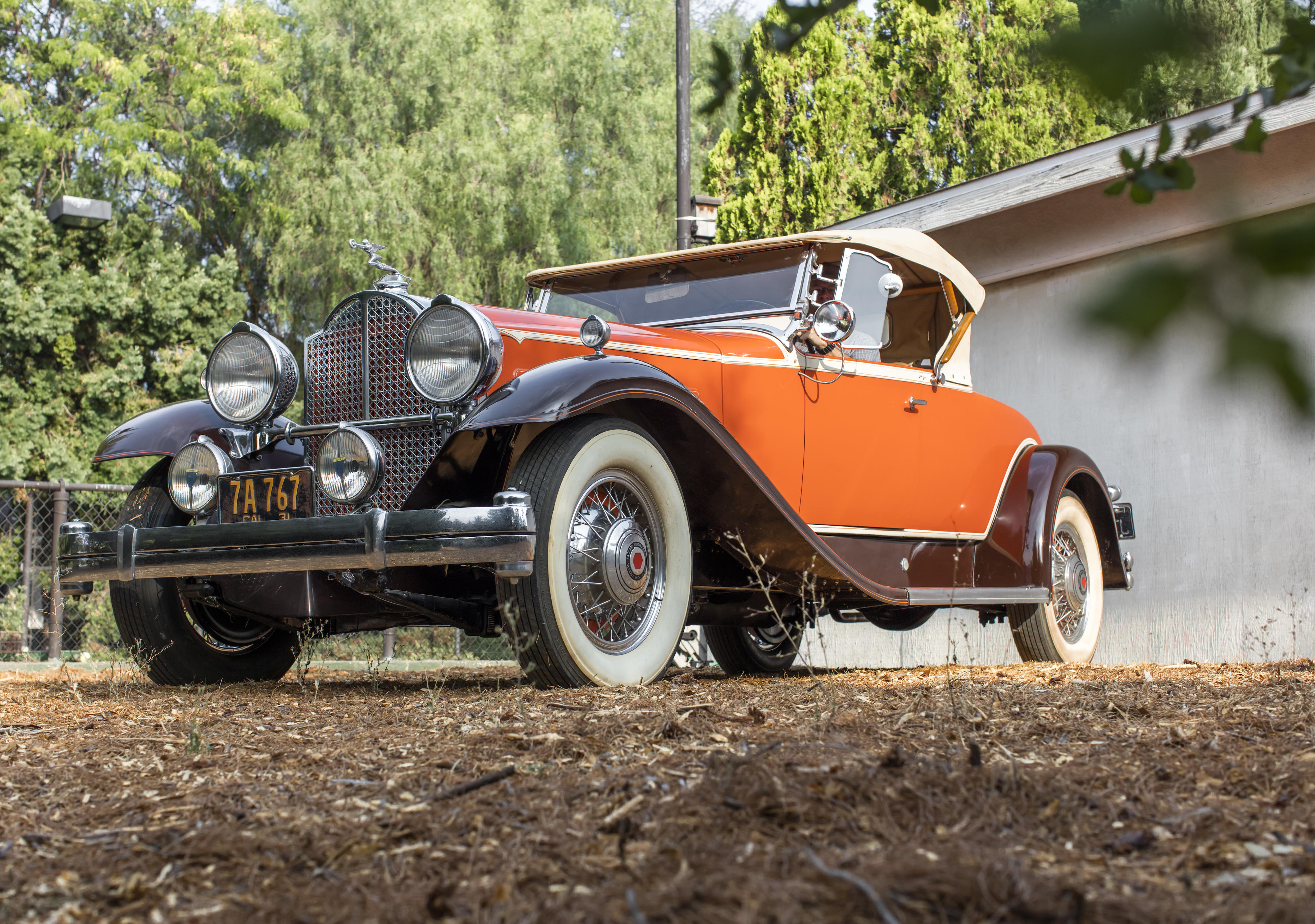
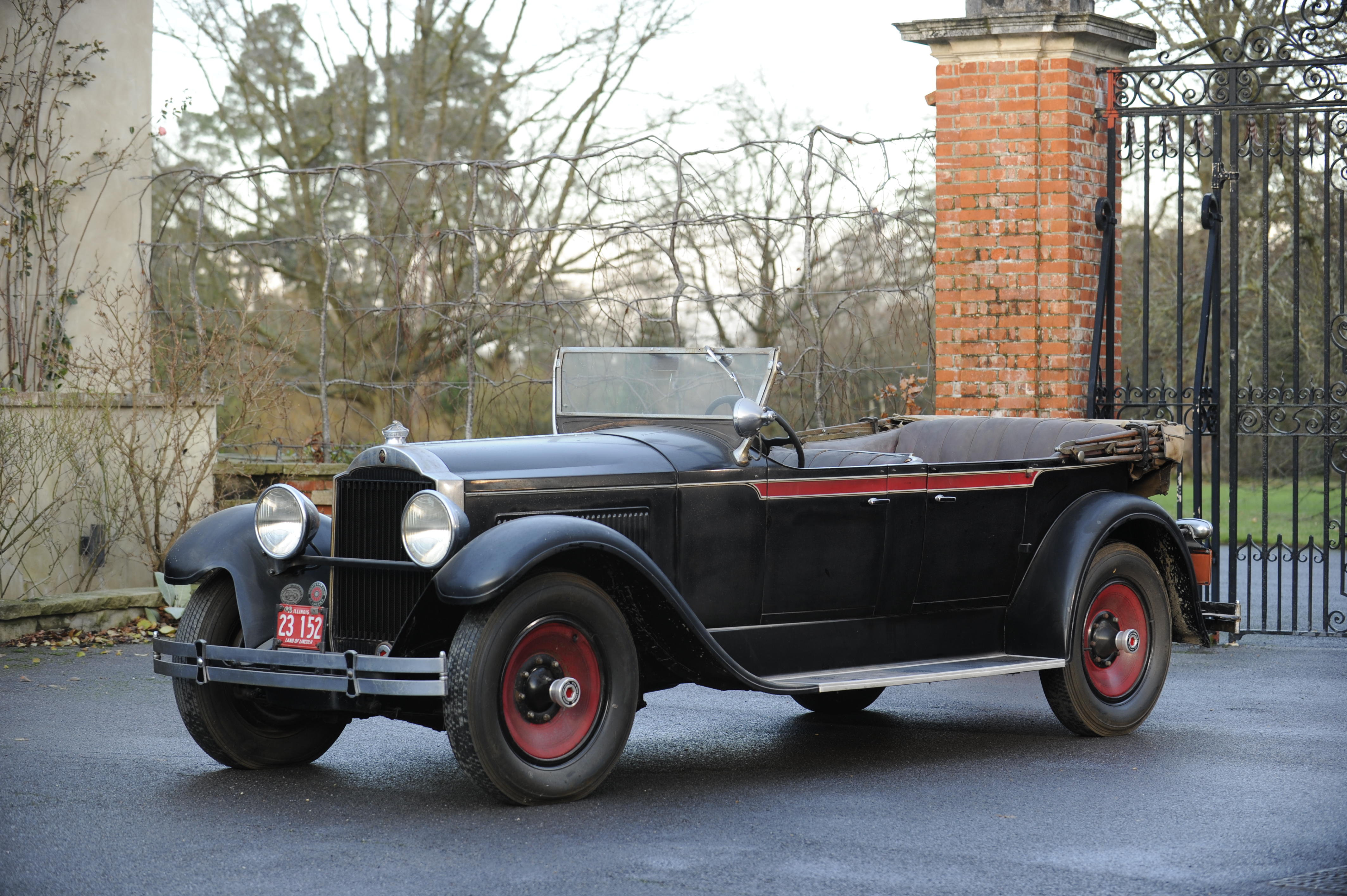

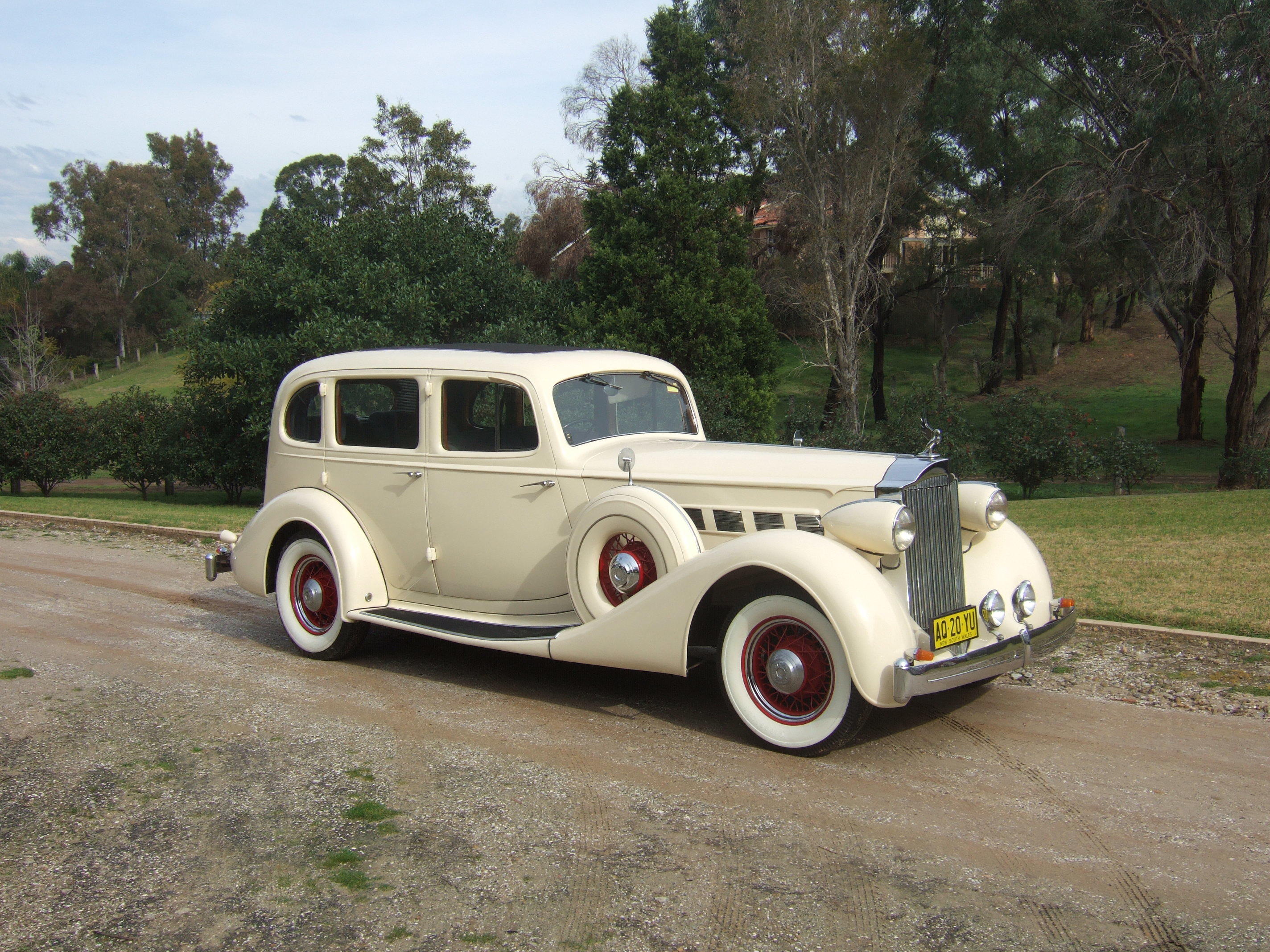

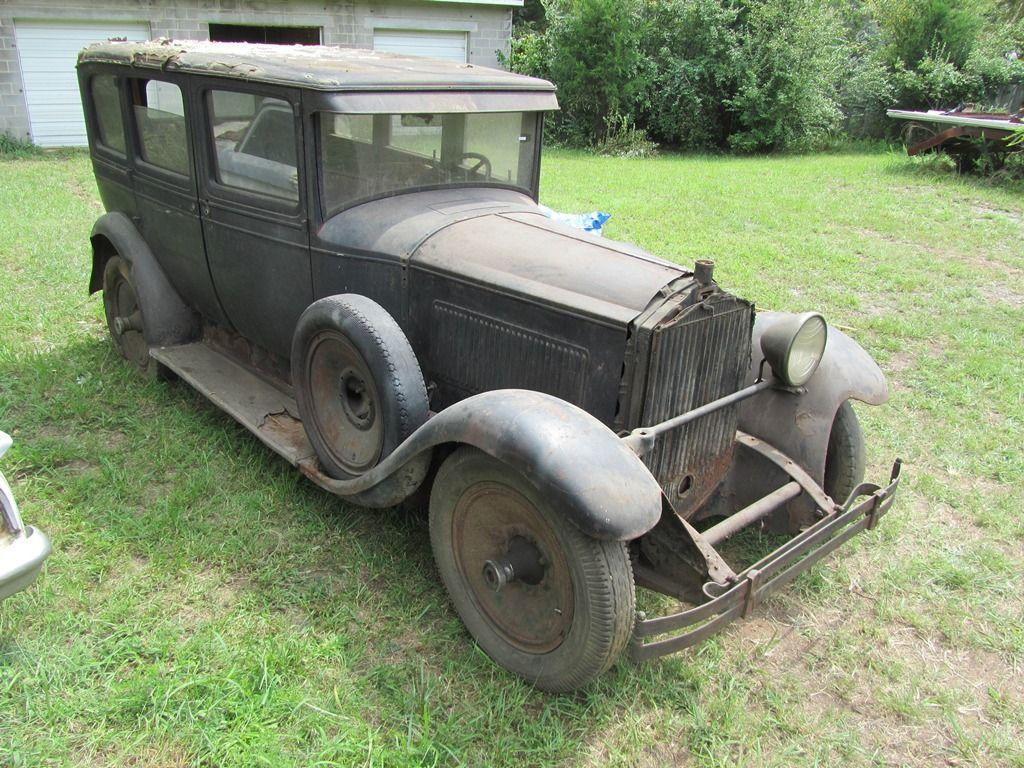
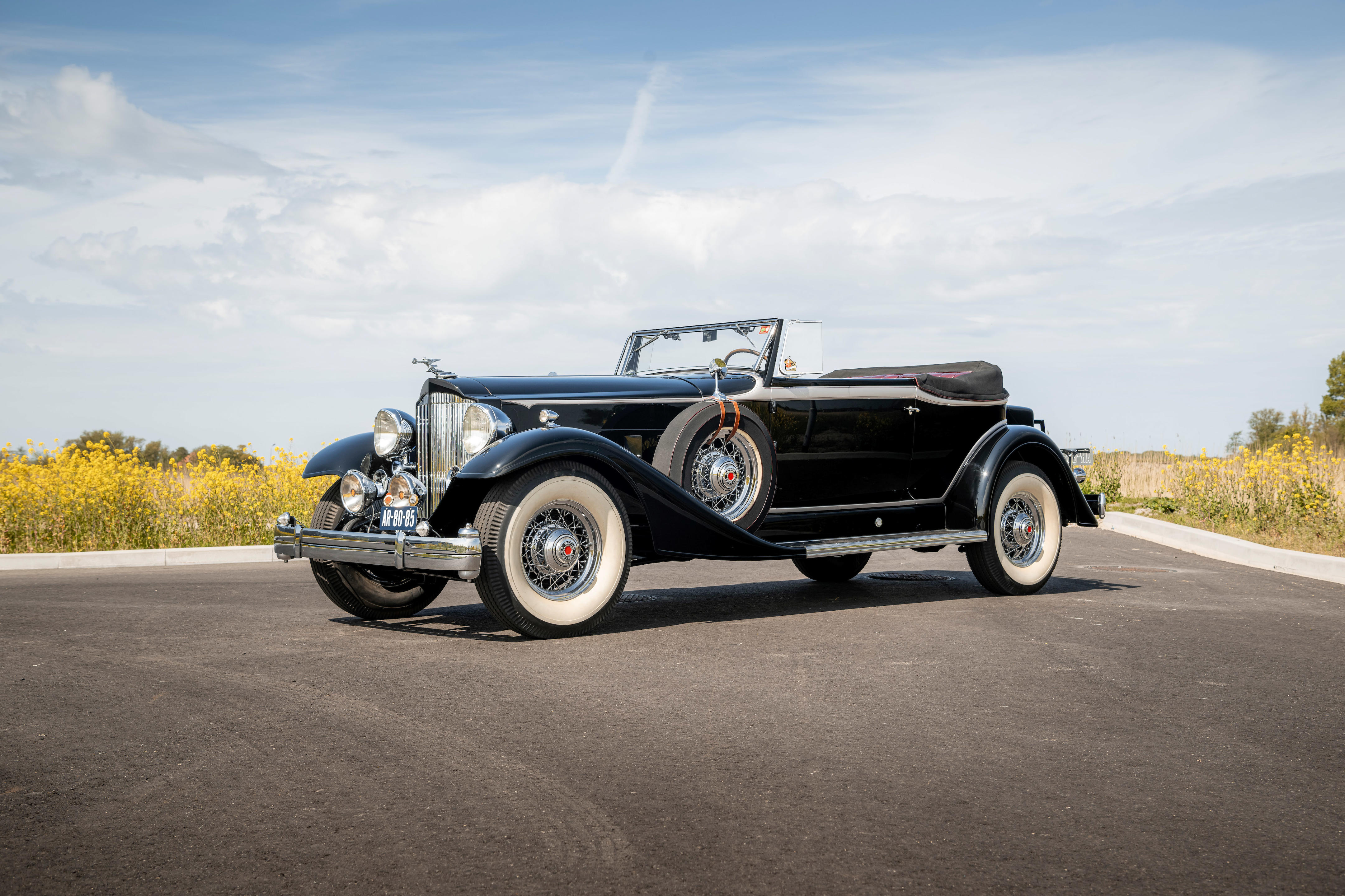
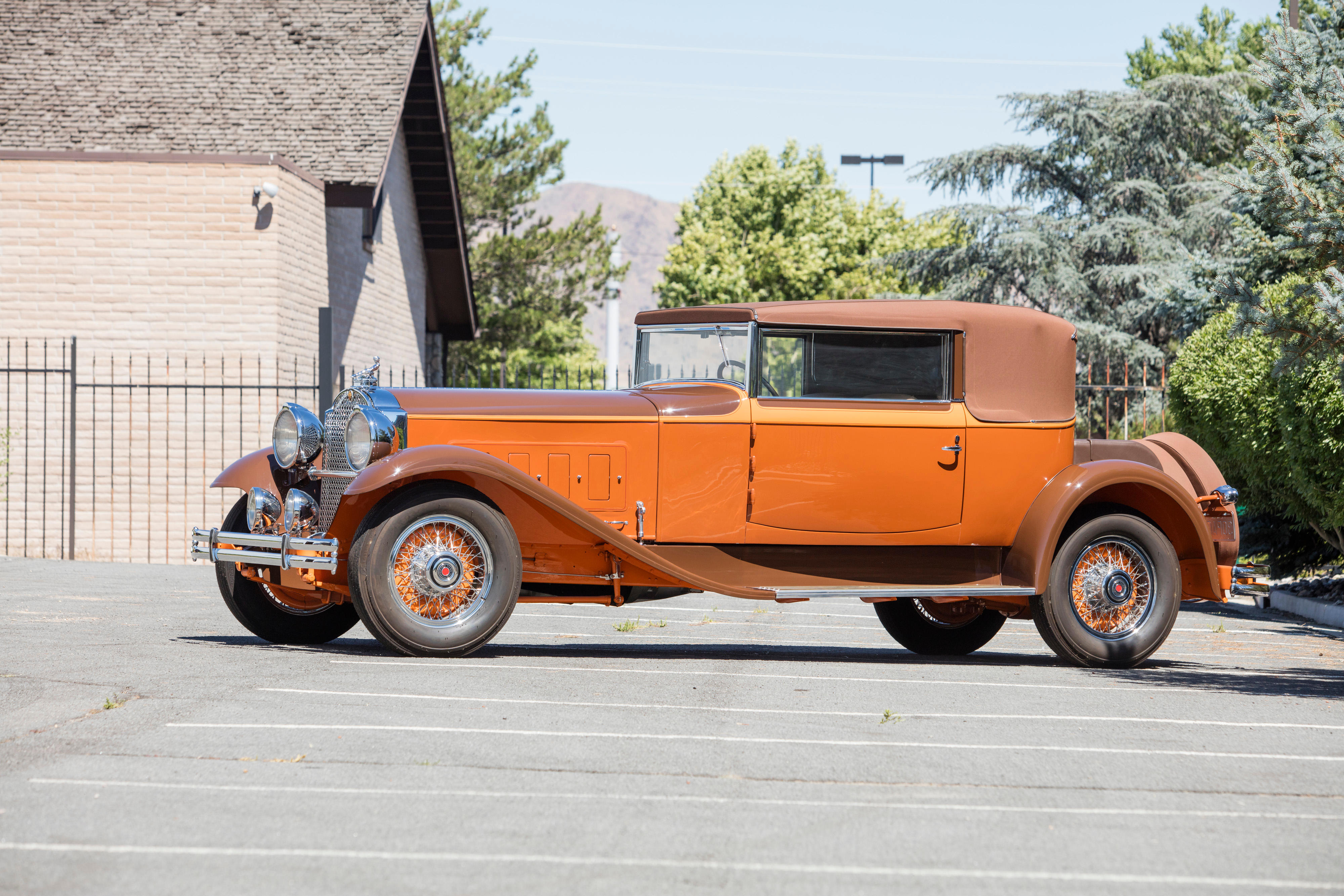
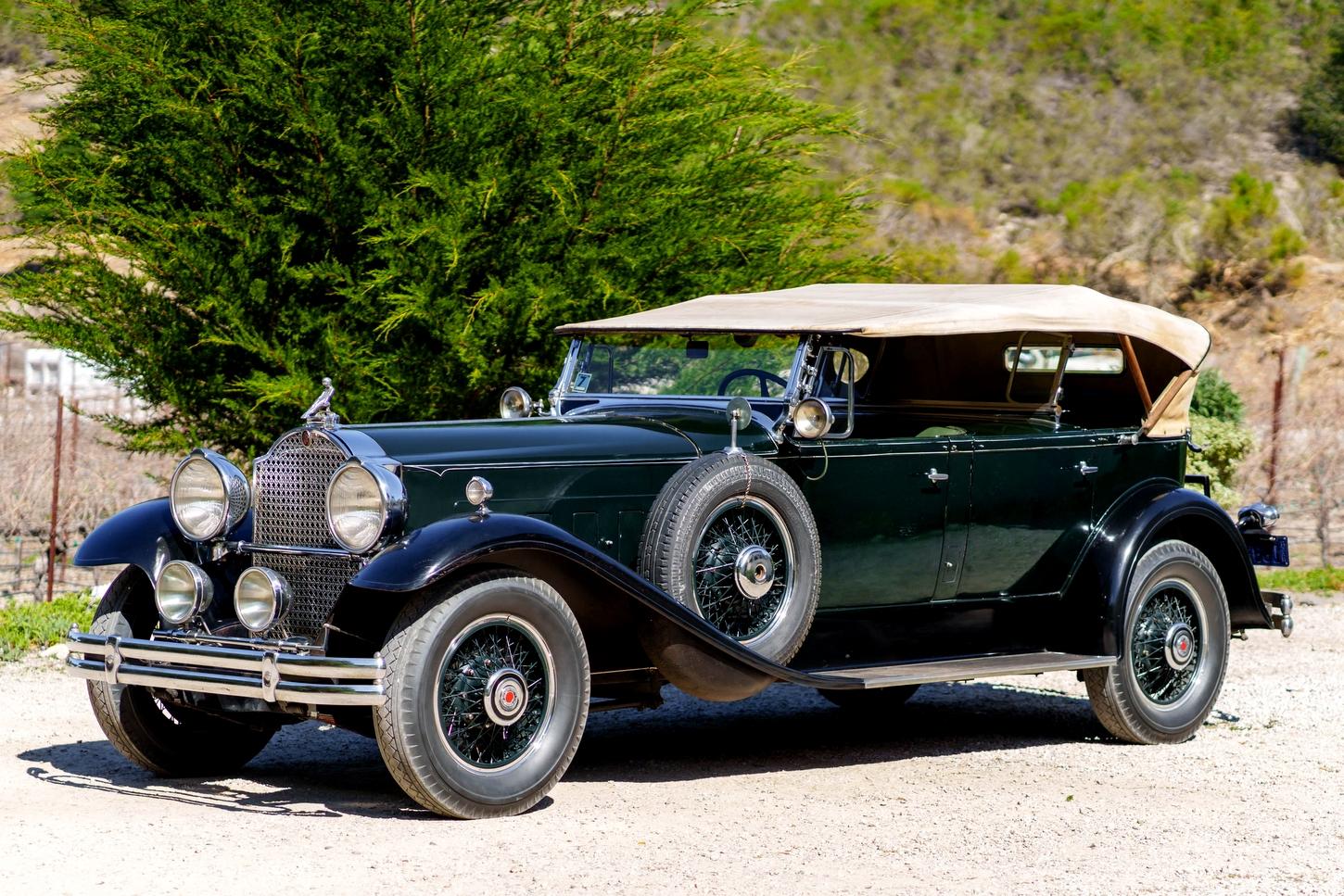
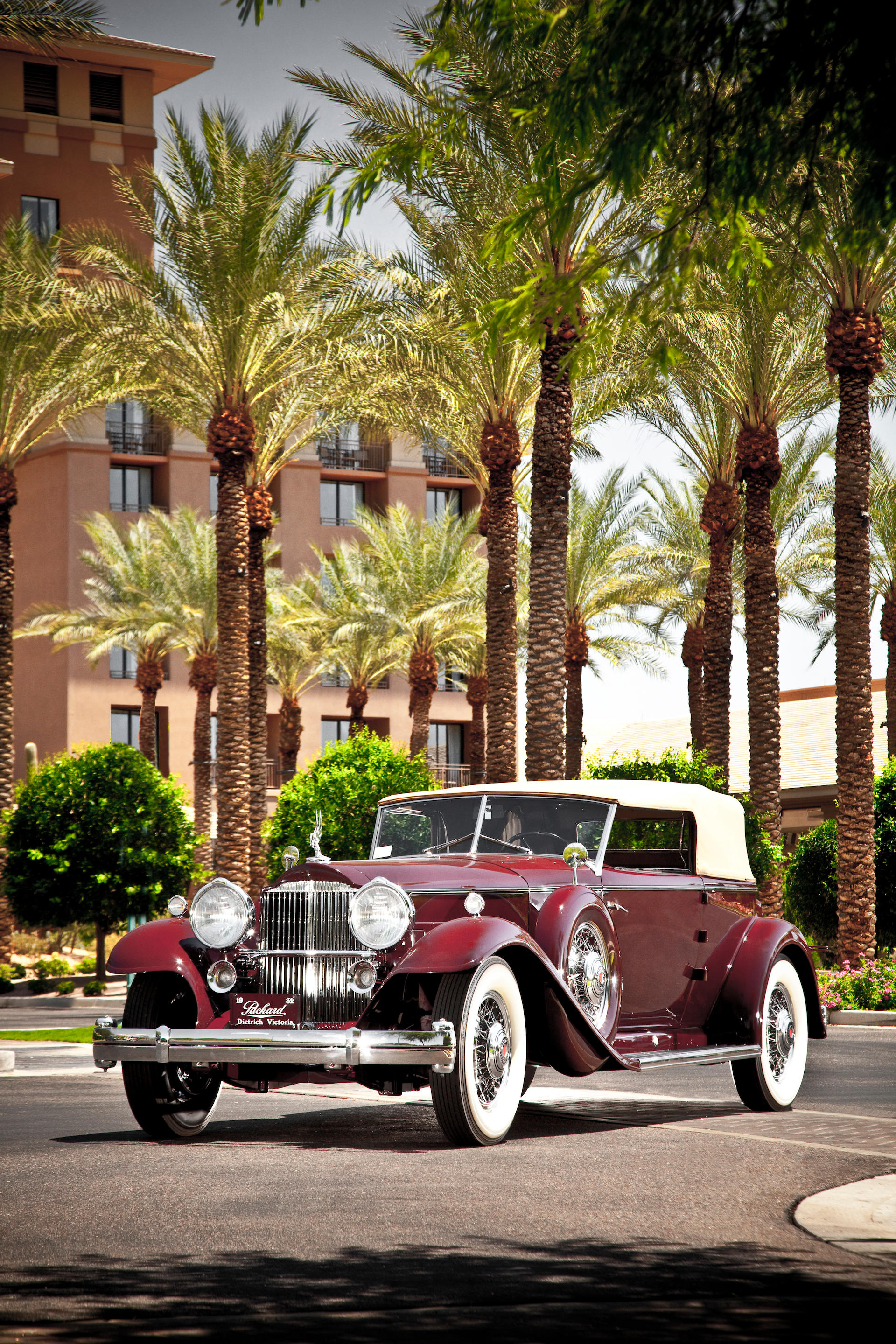


Testen Sie LotSearch und seine Premium-Features 7 Tage - ohne Kosten!
Lassen Sie sich automatisch über neue Objekte in kommenden Auktionen benachrichtigen.
Suchauftrag anlegen